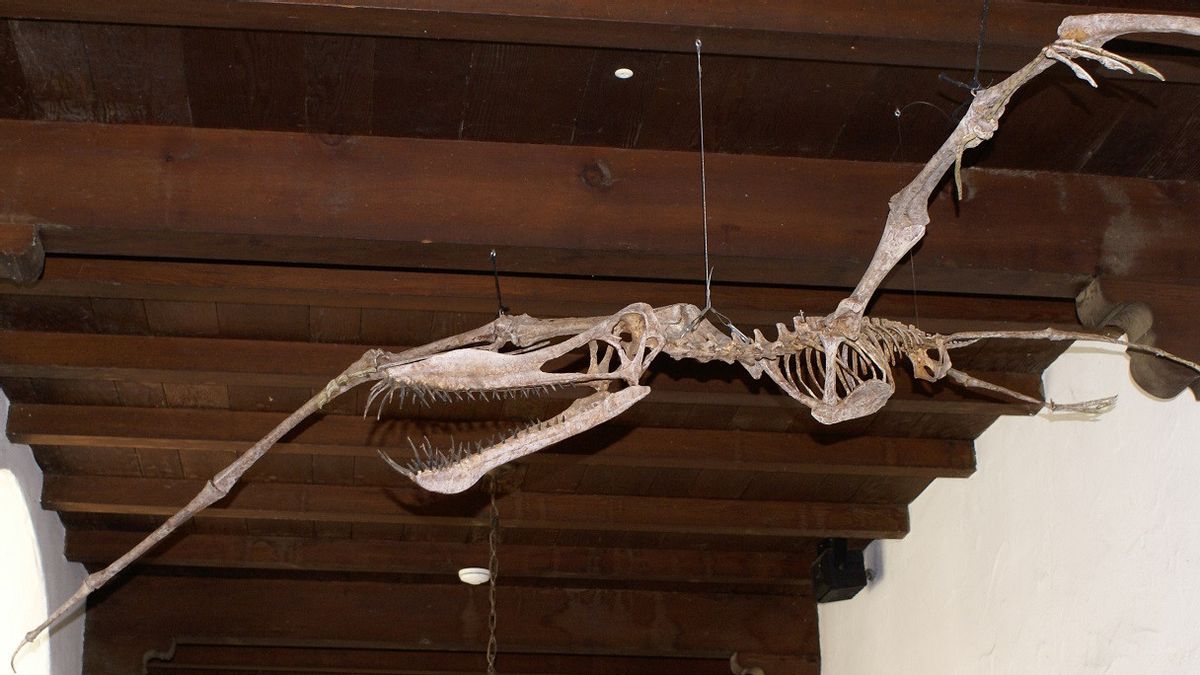JAKARTA - Kevin Petersen, an avocado farmer and curator of the fossil museum Kronosaurus Korner in northwest Queensland, Australia managed to find a number of fossil bones in western Queensland in 2021.
The fossil was identified as belonging to Haliskia Peterseni, genus, and a new species of pterosaurs, according to a statement from the team at Baryin University at Perth, which led the study, published in the journal Scientific Reports.
Pterosaurs are flying reptiles that coexisted with dinosaurs about 100 million years ago.
"With a wingspan of about 4.6 m, Haliskia will be a frightening predator about 100 million years ago when most of the western Queensland region was underwater, covered by a vast inland ocean, and globally around Victoria's current southern coastline", said study lead author Adele Pentland, a Ph.D candidate at the School of Earth Science and Planetaryculin, in the statement, cited from CNN June 13.
The giant creature is the first vertebrate to develop flight capabilities and coexist with dinosaurs during the Meszoikum Era, which began about 252 million years ago.
"Pterosaurs are wingy reptiles that have wings made of skin membranes, so in some ways they resemble bats but they look very different and look like other worlds in terms of their head shape," explains Pentland.
He further explained that Haliskia will hunt fish and squid such as squid in the inland sea, which is also home to large marine reptiles such as plesionoids and ichthyosaurs, but it must come to the mainland to lay eggs.
It will be eaten by large marine reptiles such as Kronosaurus, whose own skull is 2.4 meters (7.9 feet) long, he added.
"Haliskia will not have the opportunity to fight such animals," said Pentland.
It is known, less than 25 sets of pterosaur remains belonging to four species have been found in Australia since the 1980s. Meanwhile, more than 100 sets have been found in Brazil and Argentina.
In Haliskia's discovery, Petersen discovered the most complete pterosaur specimens ever found in Australia to date, Pentland said in a statement, praising Petersen for his "close preparedness" of the remains.
"Haliskia completes 22 percent, making it twice as complete as the only other known partial pterosaur skeleton found in Australia," he said.
"That includes a complete lower jaw, upper jaw end, 43 teeth, spinal cord, ribs, bones from both wings, and part of the legs. The skeleton also includes a very thin and smooth throat bone, which shows muscular tongue, which helps when eating fish and sephalopods," he explained.
Pentland told CNN he "did not expect the specimen to be that complete." The fossil will join a collection at Kronosaurus Korner. Petersen said he was happy with the discovery.
"I am delighted that my discovery is a new species, because my passion lies in helping shape our modern knowledge of prehistoric species," he said in the statement.
SEE ALSO:
In May 2023, another Pentland-led study found that pterosaurs flew Australia's skies as far as 107 million years ago.
Paleontologists came to the conclusion after examining two pieces of prehistoric bones extracted from the Dinosaur Cove, a site containing fossils in the Australian state of Victoria, more than three decades ago.
The samples are apparently the oldest pterosaur remains ever found in the country, according to a study published in the science journal 'History Biology'.
The English, Chinese, Japanese, Arabic, and French versions are automatically generated by the AI. So there may still be inaccuracies in translating, please always see Indonesian as our main language. (system supported by DigitalSiber.id)














